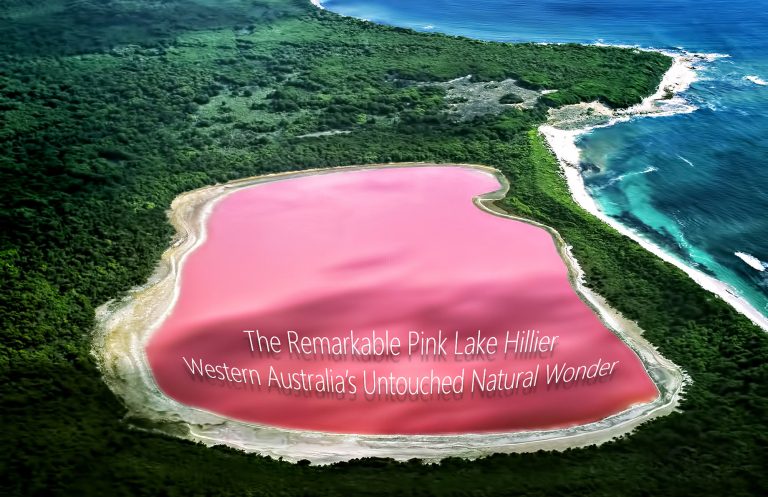Red Lake in Australia: The Mysterious Natural Wonder
Australia is literally bursting with natural wonders, but few are as enigmatic and visually stunning as the Red Lake—more formally known as Lake Hillier. Known for its striking pink hue, this saline body of water has captivated the imaginations of explorers, scientists, and tourists alike. Understanding the unique features and mysteries of this remarkable location requires delving deeper into the chemistry, geography, and history that makes Lake Hillier a true natural marvel.
Exploring Lake Hillier: The Aesthetics of Wonder
When you gaze upon photographs of Red Lake, it is nearly impossible to dismiss the allure of its vibrant hue. This stunning contrast against the surrounding forest and beach creates a unique visual experience that has inspired many to ponder its origin. The lake’s distinctive color arises from the presence of certain microorganisms, mainly Dunaliella salina and Halobacteria, which thrive in its hypersaline waters. These microorganisms produce carotenoids, pigments that interact with sunlight to create this ethereal pink tone.
Seen from above, the juxtaposition of colors creates a separate world of sorts—where the cerulean ocean embraces the pink lake in a tender embrace. Such picturesque scenes prompt a sense of wonder and questions: what indeed causes this peculiar coloration? Are there implications for broader ecological systems? These questions not only encourage curiosity but also foster an appreciation for the intricate relationships that define our natural environment.
The Science Behind the Pink: A Closer Look
While the pink hue is undeniably awe-inspiring, the science behind it adds another layer of depth to Lake Hillier’s allure. The lake’s saline concentration exceeds that of standard seawater, creating an environment where only certain organisms can flourish. This extreme salinity—while inhospitable to many forms of life—provides the perfect habitat for the aforementioned microorganisms, which ultimately produce this vibrant color. The conditions in Lake Hillier serve as a fine example of extremophiles adapting to thrive in challenging surroundings, mirroring life’s remarkable ability to endure and adapt.
The lake’s distinctive color changes under different lighting and seasons, presenting a dynamic tapestry that shifts with our planet’s rhythms. Observing these transformations offers an engaging challenge: consider visiting Lake Hillier yourself, to witness, firsthand, how natural light alters the perception of its hue throughout the day.
Ecological Significance: The Vital Ecosystem
Beyond aesthetics, Lake Hillier stands as a testament to the delicate interplay of ecosystems. The hypersaline conditions foster unique wildlife, and while you will not encounter traditional aquatic life such as fish, you may find various microbial communities and bird species that have adapted to these extreme conditions.
The ecological importance extends to the surrounding flora as well. The intricate, symbiotic relationships between the lake and its surroundings illustrate the principle that every organism—from the smallest bacterium to the tallest tree—plays a crucial role in maintaining the balance of its environment. This consideration prompts us, as visitors and stewards of the planet, to contemplate our position within this intricate web of life. The question arises: how can we ensure the preservation of such unique ecosystems for future generations?
Experiencing the Wonder: A Journey Awaits
Visiting Lake Hillier is nothing short of an extraordinary adventure. The most accessible route involves a scenic flight over the lake, allowing you to marvel at its vivid colors from a bird’s-eye view, a perspective that adds to the wonder of this natural phenomenon. Alternatively, guided tours provide opportunities for immersive engagement, where stories of the lake’s history and environmental importance are interwoven with breathtaking sights.
As you contemplate a journey to this remarkable destination, consider the chance to engage not just in sightseeing but in a deeper quest for knowledge. Challenge yourself to learn about the delicate balance of ecosystems, the scientific phenomena behind the lake’s color, and the role of conservation in protecting such unique environments. Rediscover the joy of exploration, and let Lake Hillier inspire you to dive deeper into the mysteries of our natural world.
In conclusion, Lake Hillier’s striking appearance is merely the surface of a multifaceted reality. From the science behind its color to its ecological significance, this splendid lake encourages us—and challenges us—to appreciate and nurture the wonders of the natural world. Engage your curiosity, and let the journey of discovery lead you down paths previously unimagined, for nature, after all, is the greatest teacher of all.
You May Also Like
Best Fish to Catch in Australia: A Guide for Anglers
Australia boasts an extraordinary diversity of fish species, making it …
Emily Bay Norfolk Island: A Hidden Gem in the Pacific
Emily Bay, a picturesque enclave nestled on the sun-kissed shores of …
Holidays on August 23: Global Festivities & Observances
August 23 is a date that carries a bouquet of cultural significance …





